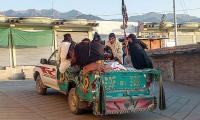When elections take place in the world’s largest democracy, political eyes across the globe are naturally fixated on India. With the world’s biggest population and vast, diverse landscapes, vote counting becomes a prolonged process. In the recent elections in the country, Prime Minister Narendra Modi’s Bharatiya Janata Party (BJP) secured more seats than the opposition alliance – and yet the results were surprising.
The BJP’s main slogan, ‘Ab ki baar, 400 paar’ (This time, over 400), was a bold call to send more than 400 candidates to the 543-member Indian parliament. Despite Modi’s high-stakes campaign and the exit polls predicting a sweeping victory, the BJP won only 240 seats. This outcome suggests that the electorate delivered a sobering message, curbing the party’s overconfidence.
Take the Faizabad constituency, for instance. Located in Uttar Pradesh and encompassing the city of Ayodhya, where Modi inaugurated Ram Mandir with grand fanfare on a contentious site, the BJP still faced a significant defeat. Despite the spectacle and fulfillment of a long-standing party promise, pressing issues like unemployment and rising prices dominated voter concerns. A survey across 19 states revealed that, while 22 per cent admired the temple inauguration, only 8.0 per cent prioritized it. Unemployment, on the other hand, was the primary concern for 27 per cent.
These election results hint at potential change. The Indian electorate has revived a viable opposition in parliament, a prospect that seemed distant amid predictions of a BJP landslide. With possible shifting alliances in the coming days, the political landscape might still hold surprises. However, all this political manoeuvring may seem trivial in the face of pressing issues like overheating and water shortages threatening India.
That a newly unified opposition managed to prevent Modi’s party from winning an outright majority under these conditions took everyone by surprise. And it suggests that even when would-be authoritarians attempt to tilt the playing field, voters can and will state their will, no matter the autocrat’s preferences. The beauty of an election is that politicians have to go to the people, and the people get an opportunity to express their anxieties and their perspectives.
Whether this election result signifies a complete rejection of Modi’s anti-Muslim campaign will become clear over time. However, it is unmistakably a rejection of his economic policies. These policies have been disastrous for vast segments of the Indian population, particularly the poor and socially marginalized groups.
Since 2014, wealth and income inequality have surged, unemployment has reached record highs, and rising prices have burdened ordinary people. Numerous surveys reported in the media have documented these issues, yet the central government failed to implement remedial measures, relying instead on its strategy of polarizing Hindus against Muslims to secure votes. States like Uttar Pradesh and Bengal, among others, have disrupted the BJP’s plans.
Let’s shift focus to the relationship between Pakistan and India. The BJP’s campaign emphasized a zero-tolerance approach to terrorism, subtly underscored by references to the ‘2016 surgical strike’ and ‘2019 airstrikes,’ signaling its firm stance on Pakistan.
However, the most significant barrier to normalized relations between these neighbours remains the contentious Kashmir valley, a picturesque but volatile region over which they have fought multiple wars since gaining independence from British rule in 1947. Relations further deteriorated in 2019 when Modi’s Hindu nationalist government revoked Article 370 of the Indian constitution, stripping Indian-administered Jammu and Kashmir of its partial autonomy.
Despite the formal diplomatic freeze, a glimmer of cooperation emerged in February 2021 when the two countries renewed a two-decade-old ceasefire agreement along the 725km (450 miles) Line of Control, the de-facto border dividing Kashmir. In 2022, following Shehbaz Sharif’s ascension to the Pakistani premiership after Imran Khan and his Pakistan Tehreek-e-Insaf (PTI) were ousted via a parliamentary vote of no confidence, Modi extended congratulations and expressed a desire to work together for regional peace and stability.
Many diplomatic observers believe the status quo will persist in Pakistan-India relations: neither war nor peace. The Pakistani Foreign Office has expressed hope that India will create a “conducive environment for peace and dialogue.” After a decade of acrimony and distrust, cautious steps are natural.
However, the initiative lies with India. If Modi softens his rhetoric and extends a hand of friendship, Pakistan should reciprocate. Restoring full diplomatic relations and easing the visa process, particularly for family visits, could be initial steps. A potential meeting of both prime ministers at the next SCO summit could further these efforts. Reviving backchannel and Track II diplomacy, even if initially limited to preliminary discussions, is crucial.
While Pakistan should maintain its principled support for the Kashmiri struggle for self-determination, other issues can be addressed if India adopts a more flexible stance. The new Modi government faces the challenge of moderating its anti-Pakistan rhetoric, but bold steps are essential for lasting peace in South Asia, embodying true statesmanship.
The writer is a member of the National Assembly and has a PhD in Law.
Election results in other countries last year forced many rulers of past to taste fruits of their karma
On December 21, Trump unleashed fresh salvo, lambasting Panama for its "unfair" canal fees
According to Unicef, estimated 22.8 million children aged 5 to 16 are out of school in Pakistan
Urdu slogan carrying incumbent PM’s name is ‘Shehbaz Karey Parwaz’, which means Shehbaz is high flier
Gender disparities are pronounced in KP, where girls account for 64% of OOSC
Chinese philosopher Mencius prophesized 3000 years ago that state that does not employ worthy perishes







